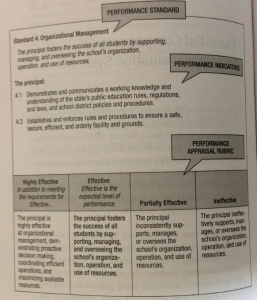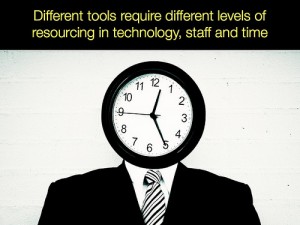
One of my district’s recent projects has been thinking through and seeking to transform the way we communicate via digital means. These are some questions that come to mind when I contemplate digital age learning and communication.
Dear Superintendent,
If I were a parent moving into your district, would I be able to access quality information about your schools online? Not just test scores and state report cards – but a real, true, authentic look into the classrooms and learning in your schools? Would I be able to Like your school’s Facebook page and follow your district on Twitter, and receive timely updates in my own social media streams or through a district app? Does information from your district come to me? Or do I have to go out and find it myself? Can I comment on and re-share district news? If you want answers to all your social media related questions, Visit Your URL and scan around.
Are there methods in place for informing me about issues in times of crisis? Is it clear where and how I should be locating that information and/or how the information comes to me? How can I easily find out about your district’s policies and procedures? Are directories readily available so I can contact who I need to, when I need to? How do you collect, store, and protect my child’s data? Who do you share it with and why? How can we access our child’s data at any time?
Are you proactive in publishing critical news and updates to community members or reactive after stories hit the local news?
Do your communications clearly share your vision for learning and the resources, concepts, programs, standards, and instructional techniques used to help students achieve? Do I know what your leadership team hopes to accomplish this year and beyond, in five years? Ten years?
Are all subgroups and populations equally represented in communications? Can I find as many stories about learning in the primary classrooms and emotional support classrooms as I can about high school sports achievements?
How do you accommodate for families who do not have Internet access available at home or Internet-enabled devices? Are your communications able to be easily translated for speakers of other languages? Are your district’s facilities opened up to the public to allow those without access to stay current and engage with your online spaces? Are paper communications used to reach all stakeholders in the absence of connectivity? What are you doing as a school leader to help local and government leaders get access for everyone in your community?
Do you have an online presence as a learner? How do you model for your staff and students that you continue growing and learning as a leader? Do you communicate efficiently, effectively, and consistently with your staff?
Am I a welcomed visitor on your campus? How will I feel that I am welcomed?
Dear Principal,
I want the best for my children, as I know you do. When I want to learn more about your school, can I go to your school’s blog or website and see learning taking place? Does your online presence demonstrate to the public why your school is a special place to learn? Why are your teachers special? Students? Staff? Community? Who are they? What do they believe in? Does your school’s vision and mission shine through in all of your communications? What events and activities are being shared to spark excitement and interest in your school community? How are your postings and your online presence modeling respectful and powerful online communications? Can I see photos of learning in action? Do you use Instagram or Flickr or similar to allow glimpses into daily school life?
Does your district respect the demands on my time as a busy, working parent, offering various structures (online and offline) and opportunities for learning and for parent involvement? Are there Twitter chats or Google Hangouts or live streams of events that I can attend virtually if I can’t attend in person? Are things archived for easy access after events? Are there regular opportunities for parents to provide input on various aspects of school life?
Can I find common forms on your website, things I can access quickly and easily? Schedules, handbooks, menus, bus information, directory information, policies, procedures? Do you report daily or weekly happenings in the form of school news or interactive bulletins? Do you offer the same benefits for your staff through consistently-maintained information processes?
Am I met with smiles when I enter your school’s doors?
Dear Teacher,
You spend countless moments day in and day out creating stimulating learning environments and designing learning experiences for our children. Do you communicate the ideas shared in class with your students’ families? Do your students’ families know what your class values and admires and works to achieve? If my child was in your class, would snapshots of the week’s learnings be available to me through your class blog or website, or your class’s Twitter feed or Facebook page? How can I communicate my questions and concerns with you? How do you involve my child in the communication process? How is my child expected to share his learning with you, with me, with his peers, and with an authentic global audience?
Do you share what you do with other teachers who are looking to bring the best they can to their students? Do you freely share resources, ideas, content, and time with your both your local and global colleagues, knowing that in the spirit of reciprocity you, too, will benefit from what others share? Do your students know you are a learner first?
Is my feedback welcomed and encouraged? Can you help me understand the difficult work that you do in a way that helps me best support my child?
Am I met with smiles when I’m welcomed at your classroom door?
Dear Parent,
Don’t settle when it comes to your child’s school’s communication methods. You deserve to understand the full breadth and depth of your child’s learning experiences and to be embraced as part of the learning community. Your voice deserves to be heard and acknowledged. You should expect not only to be involved with your child’s school, but to be engaged.
What else should we be asking ourselves about the way we communicate in school communities?







